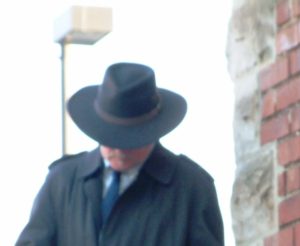I graduated from college in the spring of 1977. At that time, we wondered what the future would look like at the beginning of the twenty-first century. We imagined flying car, robot maids, and living like the Jetsons. Life is now seventeen years into the twenty-first century, and few or our imaginings have materialized. Our only shot at personal flying contraptions is large drones, which we’d have to learn to steer by leaning and figure out a safe way to stop and land. Good luck with that. One of the reasons we don’t have cars that fly is because of all the questions they create. At what height would we fly? Would it be controlled by current air traffic controllers or would we need a whole new control set up? Too many questions without answers. I am still stuck on steering a drone by leaning.
How does this relate to the history that we were not taught in school? Well, it does in a weird sort of way. In a short blog, it’s impossible to talk about all the promises of the past and the few that have been fulfilled. So, I want focus on the computer world–where it was in 1977 and where it is today.
During my time in college, I took some college courses outside of my major subject, including computer science programing. We dealt with punch cards and, yes, sometimes hanging chads. To show you how smart I was, I took this class self-pace. At midterm I had done, well, little. Okay, nothing. Then I made a brilliant decision—I didn’t need to know about computers, so I would get someone to do my computer work for me. Brilliant. In hindsight, even though I didn’t become a computer programmer, it would have been wise to get ahead of the curve on learning about computers.
I got my first computer in 1986. It was a Tandy with two 6” floppy disk drives. I thought it was the greatest thing ever. I could type reports and edit them and save them on disks. I could even do spreadsheets—with the calculations done by a computer.
Within a year, I was hired to do a complicated report, so I purchased a computer with both a 6” and a 3 ½” floppy disk drive. We could store twice as much on the smaller disk than on the larger one (which was still next to nothing in today’s world). This allowed me to sit in my office and work longer hours. (We were told that computers would speed tasks up so fast that we’d have more leisure time. That hasn’t happened yet.) Computers in that day would lock up on a regular basis. The screen came in one color—green. But, even with restarts and lost work, it was better than a pen and yellow pad and/or a typewriter.

My wife told me about the computer room at the bank where she was employed. It contained what looked like four giant refrigerators with workstations attached to each. You had to wear a coat in that room because it was so cold. Each one of the “giant refrigerators” had big reels of magnetic tape whirling back and forth. Yes, data stored on magnetic tape was cutting edge at the time.
In the early 1990s, one of my client’s, a real computer nerd, told me that early in the twenty-first century, computer companies would virtually give away their computers because they would make all their money on software and license fees. At that time, you would pay around $5000 for a good high-end computer—and network computers were almost twice that. The home/office computer setup included a bulky monitor, a keyboard (sometimes attached to the monitor), and a large housing unit. Laptops were just starting to hit the market, but they were heavy and very inefficient, while pad computer technology was still on the drawing board. Now, home/office computers will soon be obsolete. Laptops are the driving force, with docking stations to plug in multiple monitors, keyboards, printers, etc. And those laptops have dropped in price. As to computer software—it is much more powerful, but it’s come way down in price due to competition. Annual licensing fees are where the money is on most Cadillac software.
Today, most computers have more ram than the second and third generations of internal hard drive computers in the 1990s. For that matter, thumb drives and cellphones have more storage space.
Finally, to show how computers have evolved they are more powerful than ever imagined in the 1970’s and I haven’t even mentioned the role of the internet, first starting in 1969 (called ARPAnet linking two remote computers). Sorry Al Gore. But the impact they have had on computers—and life as we know it—is beyond Al Gore’s wildest dreams.
So what stories do you have regarding predictions for the twenty-first century? How close were your imaginings to current reality?

